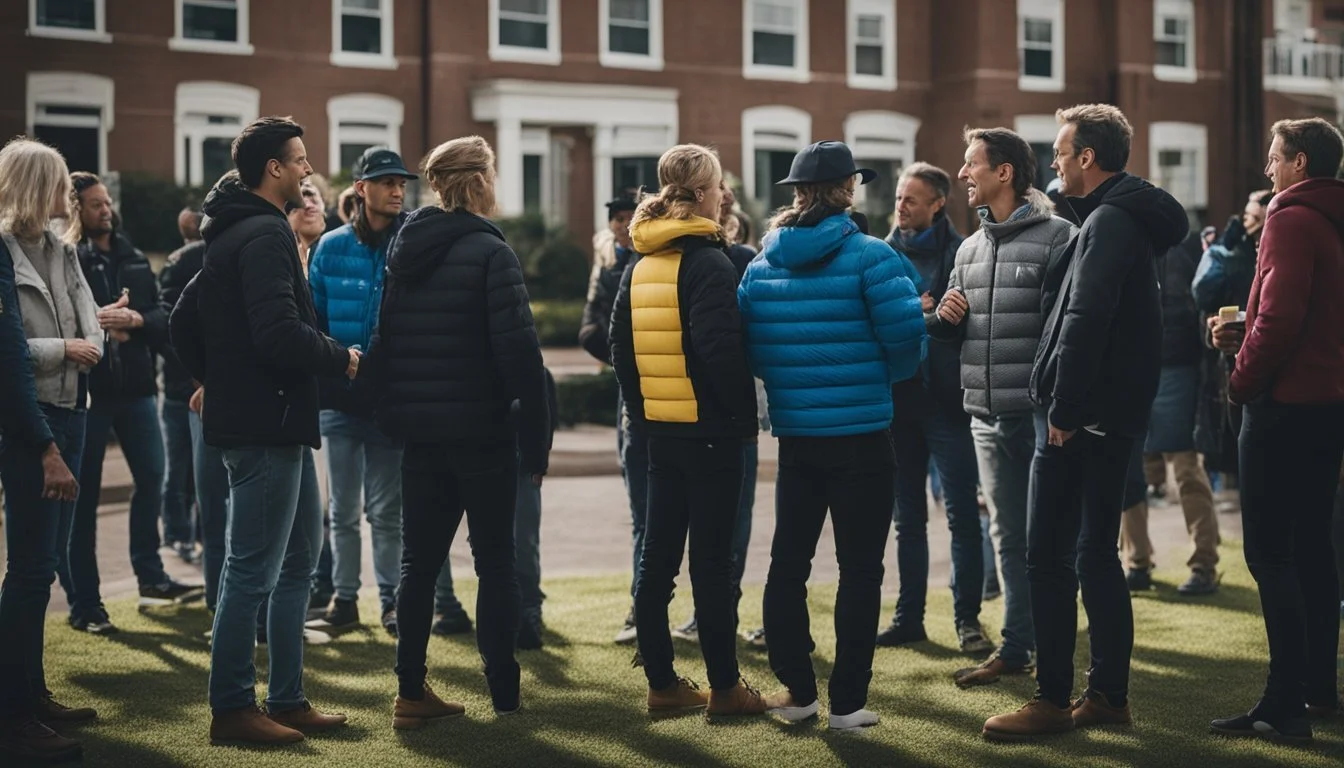Candid Conversations: Austin’s Community Reflects on Lance Armstrong’s Impact
The story of Lance Armstrong is one of the most compelling narratives in sports and public life, full of dramatic highs and lows. In Austin, where Armstrong once held a larger-than-life presence, his legacy continues to stir strong feelings among residents. Lance Armstrong's fall from grace, marred by doping allegations and his subsequent lifetime ban from professional cycling, transformed his image from an inspirational hero to a cautionary tale.
Austin's community remains divided, reflecting a mix of admiration for Armstrong's past achievements and disappointment over his actions. This duality is mirrored by his ongoing endeavors—while he has distanced himself from his former foundation, Livestrong, he remains active in various business and philanthropic ventures, including running a coffee shop and a bike shop in the city. Armstrong's energetic shift towards new projects and a podcast has kept him in the public eye, maintaining his relevance and eliciting discussions about redemption and personal growth.
Today, Armstrong's story is not just about a fallen icon, but also about resilience and reinvention. His candid reflections on his life, from his rise to fame to his very public downfall and his current pursuits, provide a rich ground for reflection for the Austin community. These ongoing conversations reveal the complexities of forgiveness, legacy, and the human capacity for change.
The Rise of a Champion
Lance Armstrong's journey to becoming a legendary figure in professional cycling began with early successes and was highlighted by his remarkable return to the sport after battling cancer. His perseverance and dedication culminated in seven consecutive Tour de France titles, placing him among the greatest athletes of his time.
Early Years and Entry into Cycling
Lance Armstrong was born on September 18, 1971, in Plano, Texas. His early athletic interests were not strictly cycling but also included swimming and running. He showed promise in triathlons, winning several titles as a teenager.
At 16, Armstrong focused increasingly on cycling, quickly ascending the ranks. He joined the U.S. National Cycling Team as a teenager, demonstrating immense promise. By age 21, he became the U.S. National Amateur Champion, signaling his potential for a professional career.
Triumph over Testicular Cancer
In October 1996, Armstrong was diagnosed with advanced testicular cancer, which had spread to his lungs, abdomen, and brain. Despite the grim prognosis, he underwent aggressive treatment, including surgery and chemotherapy.
Remarkably, Armstrong overcame the illness and returned to professional cycling. His cancer battle garnered widespread media attention, and his recovery underscored his resilience. The experience profoundly shaped his outlook, and he later founded the Livestrong Foundation to support fellow survivors.
Historic Victories at the Tour de France
Armstrong's most noteworthy achievements came between 1999 and 2005 when he won seven consecutive Tour de France titles. His victories were a testament to his extraordinary physical and mental conditioning.
His training regimen and strategic racing style set him apart from competitors. These victories made him a celebrated figure in the sports world. Each win was meticulously planned, combining team support and individual effort, cementing his status as one of cycling's all-time greats.
Contribution to Cancer Awareness
Lance Armstrong's advocacy efforts transformed cancer awareness and support, shaping a legacy that began with the founding of a nonprofit and grew through impactful campaigns and patient support initiatives.
Founding of the Lance Armstrong Foundation
In 1997, Armstrong founded the Lance Armstrong Foundation (now Livestrong) after his diagnosis with advanced-stage testicular cancer. The foundation initially aimed to provide resources for cancer patients and elevate public awareness about the disease. By partnering with medical professionals and communities, it offered educational materials and support services. Notably, the foundation raised significant funds for research and support initiatives through events and collaborations.
Impact of Livestrong Campaigns
The Livestrong campaigns, particularly the yellow bracelet initiative, had an enormous influence on cancer support culture. Launched in 2004, the bracelet symbolized unity and strength, costing about 15 cents each and raising millions for cancer research. It became an emblem of survivorship, widely adopted across the globe. The campaign's success helped mainstream discussions about cancer and amplified fundraising efforts significantly, fueling further advancements in both research and patient care.
Support for Cancer Patients and Research
Armstrong's foundation provided comprehensive support for cancer patients, addressing their physical, emotional, and financial needs. It offered counseling, healthcare navigation services, and financial assistance for treatment expenses. The organization also funded numerous research projects aimed at improving cancer treatment and understanding. Through these initiatives, Livestrong dispelled several myths about cancer survivorship, proving that a cancer diagnosis could lead to meaningful, fulfilling life experiences post-recovery.
Allegations and Controversy
Lance Armstrong's career took a dramatic turn when allegations of doping came to light. This led to legal battles, public scrutiny, the forfeiture of his titles, and a highly publicized confession.
The Doping Accusations Surface
The turning point began when reports surfaced that Lance Armstrong used performance-enhancing drugs (PEDs). Tyler Hamilton, a former teammate, alleged on "60 Minutes" that Armstrong had taken banned substances. The U.S. Anti-Doping Agency (USADA) gathered evidence and testimonies from several riders, highlighting a complex doping scheme within Armstrong’s team. These accusations painted a picture of systematic doping practices and attempts to evade detection.
Legal Battles and Public Opinion
The doping scandal resulted in numerous legal battles. Armstrong was involved in a lawsuit with SCA Promotions over withheld bonuses linked to his Tour de France victories. A key moment was when Armstrong sought a Temporary Restraining Order against USADA, which was denied by a judge. As the scandal unfolded, the public's perception shifted, and Armstrong’s image as a sports hero deteriorated. Donations to his foundation, Livestrong, also declined amid the controversy.
Stripped Titles and Sponsor Departures
In 2012, the USADA's report led the International Cycling Union (UCI) to strip Armstrong of his seven Tour de France titles. Major sponsors like Nike severed ties with Armstrong, leading to a significant decrease in revenue for his ventures. The loss of sponsorships highlighted the far-reaching consequences of the doping scandal, as companies distanced themselves from the tarnished athlete.
Armstrong's Confession
Armstrong’s public confession in 2013 on "The Oprah Winfrey Show” marked a significant moment. He admitted to using a variety of PEDs throughout his career. This confession followed years of vehement denials and lawsuits aimed at critics. Armstrong’s admission provided a sense of closure for some but opened further discussions about the ethics and pressures in professional sports.
Armstrong's Legacy and Aftermath
Lance Armstrong's story is one of both immense achievement and deep controversy. His impact on the Livestrong Foundation, the cycling community, and his own legacy continues to be a subject of heated discussion.
The Livestrong Foundation Post-Armstrong
The Livestrong Foundation initially thrived under Armstrong's leadership, raising millions for cancer research and support. After he resigned in 2012 due to doping allegations, the foundation underwent significant changes.
With Armstrong's departure, Livestrong sought to distance itself from his tarnished image to sustain donor trust. Despite these efforts, donations declined, affecting programs that benefited cancer patients. The foundation's brand, once synonymous with Armstrong's success as a testicular cancer survivor, now had to reidentify and rebuild its image independently.
Cycling Community and Public Reaction
Armstrong's fall from grace elicited a strong response from the cycling community and the public. Once hailed as a hero, his admission to using performance-enhancing drugs shattered many fans' views.
Cyclists and industry insiders condemned his actions, emphasizing the importance of clean sport. Public opinion turned sharply, with some feeling betrayed by his deception. The stripping of his seven Tour de France titles symbolized a harsh judgment, and Armstrong faced a lifetime ban from professional cycling.
Reevaluation of Armstrong's Impact
Armstrong's influence on the sport and his charitable work remains a complex topic. While his transgressions in professional cycling led to significant backlash, his contributions to the cancer community through Livestrong cannot be denied.
Critics argue his cheating overshadowed his philanthropic efforts, while supporters point to the positive impact his survivorship narrative had on many. In recent years, there has been a nuanced reevaluation of his legacy, weighing the good he achieved against the severe ethical breaches in his cycling career.
This continued reassessment reflects a broader dialogue on the interplay between personal conduct and public contributions.
Cancer Care and Advocacy in Austin
Austin has become a crucial hub for cancer care and advocacy. Texas Oncology and Dell Medical School are prominent institutions contributing to the enhancement of cancer treatment and patient support.
The Addressing Cancer Together (ACT) coalition collaborates with the Austin Area Research Organization (AARO) Health Committee to develop regional models that improve cancer care for high-needs patients. They strive to expand access to life-saving cancer screenings, diagnosis, and treatment.
YMCA of the USA and the Lance Armstrong Foundation have partnered to launch wellness programs tailored for cancer survivors. These initiatives focus on physical activity and overall well-being, addressing specific needs of cancer survivors in the Austin community.
The Young Adult Cancer Program at UT Health Austin offers essential services for young adults battling cancer. This program emphasizes patient-centered care and aims to provide support for the unique challenges this demographic faces.
In addition to institutional efforts, community events such as cycling fundraisers play a vital role in advocacy and support. These events not only raise funds but also awareness about cancer treatment and the needs of survivors.
Cancer care in Austin addresses various aspects such as chemotherapy, lesion management, and pain relief, ensuring patients receive comprehensive support. Leveraging local resources and collaborative initiatives, Austin is at the forefront of enhancing cancer care and advocacy.



